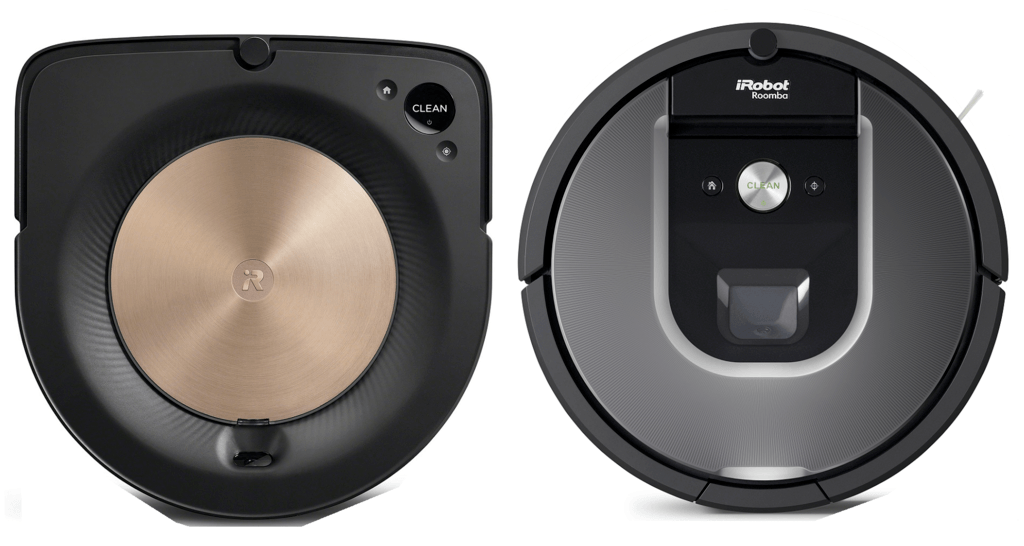iRobot releases the Roomba s9+, the most advanced, feature-rich and capable robot vacuum to date. The s9+ is also the most expensive robot manufactured by the company. If you are looking for the best of the best, your search is over. However, the Roomba 960 still has a dog in the fight.
The Roomba 960 is not as advanced as the s9+, but the affordable price tag and list of abilities make it alluring to consumers looking for progressive features without paying through the nose. This comparison review will take a look at both robots to help you decide which model is the best purchase option for you.
Contents
Differences between Roomba s9+ and Roomba 960
With an all-new ground-up design for the s9+, you would expect a vast amount of differences between the two models. You would be correct. Here is a look at the most prominent differences.
- The D-shape of the s9+ gives it a wider brushroll than the round shape of the Roomba 960.
- The 4th generation motor in the s9+ provides much more suction than the Roomba 960.
- With the Clean Base system, the Roomba s9+ can empty the collection bin on its own. The 960 does not have autoemptying.
- Imprint technology allows the s9+ to have more advanced mapping and communication features than the 960 can offer.
- When it comes to containment options, the 960 only offers the virtual walls, where the s9+ adds digital containment through the mobile app.
- The side brush of the 960 has been redesigned and repositioned to work better in the s9+.
- Roomba s9+ noise levels are drastically reduced compared to the Roomba 960 noise levels.
- The exhaust on the Roomba 960 is not defused or deflected like it is on the Roomba s9+.
- The Roomba s9+ will store up to 10 different maps while the Roomba 960 only holds one at a time.
Similarities between the Two Models
With almost every aspect being upgraded or redesigned, you might not think there are any similarities left over. However, the s9+ and 960 still share some things in common. Let’s take a look.

- Both robots use high-efficiency filters to reduce in-home allergens.
- Each of the Roomba models will recharge and resume cleaning with a technology called entire level cleaning.
- The Roomba 960 and s9+ make use of the iRobot Dirt Detect technology.
- Both of the vacuums use camera-based navigation with vSLAM algorithms.
- You can use voice commands and the iRobot Home App for added controls and features.
- The tangle-free rubber extractors are used on both devices.
- Each of the models will map your home and display this map for you in the mobile app.
Specifications Chart
Below is a chart showing you the two models side-by-side. Have a look at see if the model you have your eye on offers the features you need
| Roomba s9+ | Roomba 960 | |
| Size | 12.25×12.25×3.5 inches | 13.8×13.8×3.6 inches |
| Weight | 8.15 pounds | 8.7 pounds |
| Navigation | iAdapt 3.0 | iAdapt 2.0 |
| Battery | 3600mAh (assumed) Lithium-Ion | 3300mAh lithium-ion |
| Runtime | Up to 120 minutes | Up to 120 minutes |
| Charge Time | 3 hours | 3 hours |
| Automatic Recharge | Yes | Yes |
| Entire Level Clean | Yes | Yes |
| Filter | High-efficiency | High-efficiency |
| Carpet Boost | Yes | Yes |
| Drop Sensors | Yes | Yes |
| Bump Sensors | Yes | Yes |
| Dirt Detection Sensors | Yes | Yes |
| Camera Navigation | Yes | Yes |
| Wireless Communications | Yes | Yes |
| Mobile App | Yes | Yes |
| Voice Controls | Yes | Yes |
| Floor Types | All | All |
| Imprint Smart Mapping | Yes | No |
| Imprint Link | Yes | No |
| Collection Bin Capacity | 0.55L | 0.5L |
| Washable Collection Bin | Yes | No |
| Automatic Collection Bin Emptying | Yes | No |
| Side Brushes | 1 Side Brush | 1 Side Brush |
| Containment | Separate Purchase | Dual Mode Virtual Wall Barrier |
| Warranty | 1 Year | 1 year |
| Price | Check on Amazon | Check on Amazon |
Comparing the Roomba s9+ Vs. the Roomba 960
Now we will dive into the comparison portion. Each item below will explain the feature as well as tell you who does it better. By the end of this section, you should have a better idea of which model will suit your specific needs.
The s9+ Design Makes Some Scratch Their Heads
When the Roomba s9+ was unveiled, the most common reaction was “iRobot finally made a Neato.” The D-shape design is reminiscent of the Neato D-series look. While there is little doubt that the design is a copy of the Neato look, there are enough differences to make it stand out.
For starters, the s9+ is smaller than any Neato robot, and with more than an inch is smaller width, the Roomba design allows the robot to go more places. The Neato robots are known for hanging up on chair legs and furniture. However, the slimmer design of the Roomba s9 means fewer hang-ups.
The Roomba 960, though, still has the same round Roomba shape we have come to expect over the last 20 years. The design itself isn’t bad, but it is limited. While the side brush can get along edges and into corners, the round design prevents the robot from getting all the way in corners. It can also prevent the robot from thoroughly cleaning along baseboards.
All of this was accounted for and addressed with the s9 design. Now the robot will clean out all of your corners and deep clean the edges and baseboards without hassle or worry.
Bottom Line: The Roomba s9+ wins. A more thought-out and cleaning-focused design makes it better than the 960 in corners and along edges.
When iAdapt was last upgraded, the 900 series took advantage. The Roomba 960 was able to make use of the camera to create maps using still images and a model-building algorithm. This information is passed to the mobile app, where you can view the details of the cleaning cycles.
iAdapt 2.0 was one of the best navigation and mapping technologies around. Combining low-resolution imaging with vSLAM technologies, the Roomba 960 went where it needed to go and didn’t miss many areas of your floors.
However, iAdapt 3.0, which is used by the s9 model, is even more advanced. It still uses camera images, as well as vSLAM algorithms. However, the computer science behind it is much more sophisticated. Instead of only relying on the pictures to build a map, the s9 now also checks for landmark points, permanent structures and calculates over 2000 computations per second.
The advances in the algorithms produce a much more detailed map, allow of interaction with the map and robot through the mobile app, and prevent the Roomba s9 from missing any areas of your floor. We will cover some of these advancements, such as Imprint technologies, below.
Bottom Line: The Roomba s9+ wins again. Better navigation and mapping mean a much cleaner floor.
Aeroforce Technologies Produce More Power, Better Suction
The cleaning power, filtration, and suction are all a part of the AeroForce 3-stage cleaning technology. It is compared to the AeroVac technology used in the 600 series robots. So when you see things like “5x more power,” etc. it is always being compared to the 600 series motors and power.
With that being said, the Roomba 960 produces 5x more suction power or about 1000pa of airflow power. The motor int eh 960 is a single speed motor that is the second generation style. It wasn’t until the Roomba 980 that the 3rd generation was released, producing 10x more suction.
The Roomba s9+ uses the 4th generation motor. It has been positioned off-center to allow for more airflow, less obstruction, and a lower center of gravity. All of this combines to produce 40x more suction power, or about 2500pa of airflow power.
The rest of the AeroForce system is the same. Both the 960 and s9+ use the AeroForce high-efficiency filter, which captures particles down to 3 microns, virtually eliminating in-home allergens such as dust mites, pollen, and pet dander.
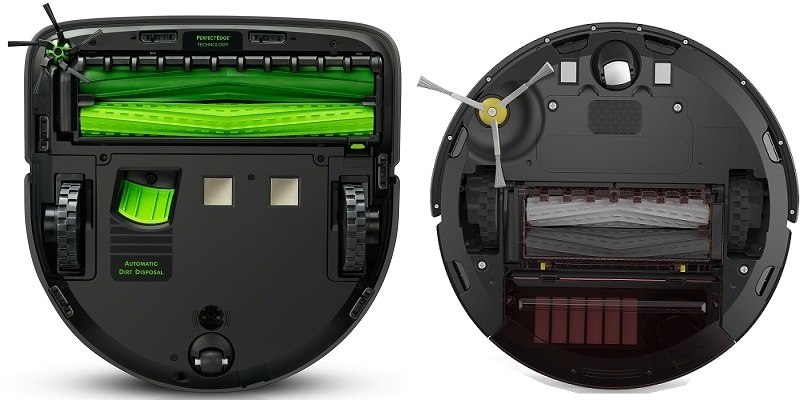
Both robots also use the tangle-free brushless extractors as well as a side brush. Combined with the other elements, both the Roomba 960 and Roomba s9 will deep clean carpeting and hard flooring with relative ease. Obviously, the Roomba s9 has more suction and will clean better than the 960 on all surface types.
Bottom Line: The Roomba s9+ wins again. A much stronger motor, better suction, and more cleaning power combine to make the s9+ one of the most powerful robots on the market.
Controls and Imprint Technology Make the Roomba s9 an Intelligent Machine
As technology advances, some older tech is left behind. In the case of controlling the robots, local controls and infrared remotes have made way for voice commands and mobile apps.
Both the Roomba 960 and s9 have local controls, but they are quite limited. Neither model will make use of remote control, either. Instead, the primary functionality and feature list are made complete with the use of the mobile app and voice commands.
The voice commands are relatively robust compared to other models on the market. The Roborock s6, for example, only has two Amazon Alexa commands. The Roomba models have over a dozen, with the Roomba s9+ topping out near two dozen commands.
You can take full control of your robot with just your voice, starting and stopping a cleaning cycle, creating schedules, and even getting status updates. Voice commands work with any Amazon Alexa or Google Assistant enabled device.
The iRobot Home App Offers the Most Control and Features
The mobile app received an upgrade when the i7 series was released, and it continued to expand with the debut of the s9. The most impressive feature set is known as Imprint technology. This has two effects for the Roomba s9 models.
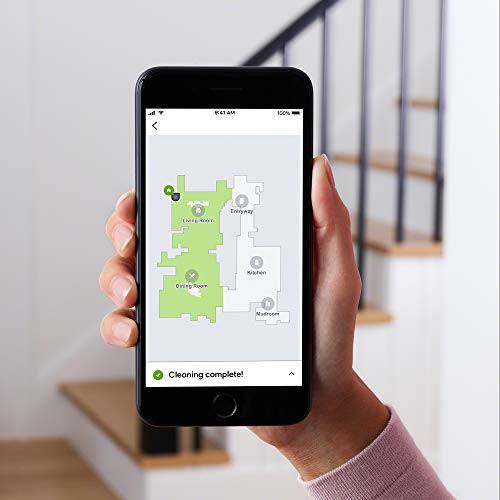
Imprint Link is a cross-robot communication system that allows the Roomba s9 to talk to the iRobot Braava m6 mopping robot. If you own both machines, the s9 will alert the m6 that it has finished vacuuming an area and the mopping robot is free to begin mopping that area.
The other technology is called Imprint Smart Mapping. This feature uses the map on the mobile app to create digital containment options. Not only will the robot scan, map, and store 10 different floor plans (you know, in case you want to share the robot with your neighbors), but it will also allow you to fix any map errors, and to name your rooms.
By naming your rooms, you then enable the ability to tell the Roomba s9 to clean only specific rooms or a single room. This feature is also carried over to the voice commands.
The mapping, status reports, cleaning reports, battery charge level remaining, and all other features of the mobile app are the same for both the s9 and 960 models.
Bottom Line: The s9+ wins yet again. The Imprint technology and additional commands make the Roomba s9+ more robust than the 960.
The Floor Types Cleaned by Both Models is Near Identical
Both the Roomba 960 and s9 are rated to clean all floor types. Because each model uses the tangle-free rubber extractors, neither will scratch or mar any hard flooring type. Both will also get into corners and along edges, though the s9+ is far superior at these areas. When it comes to carpeting, though, the superiority doesn’t stop.
The Roomba 960 is best suited for low and medium pile carpeting or rugs. It cleans carpet better than any previous model and will agitate, loosen, and lift debris from these carpet types. However, because of the limited suction power, it isn’t advisable to use it on high pile carpeting. While it is possible, the cleanliness you expect won’t be achieved.
Enter the Roomba s9+. The most powerful model currently available, the s9+ will agitate, loosen, lift and separate any debris from any carpeting surface. With the larger and broader extractors, it won’t get caught in the longer fibers of high-pile and shag carpeting like the 960 is want to do.
Bottom Line: The s9+ wins yet again. Better cleaning on the carpet as well as in corners and along edges make the s9+ one of the best models you can buy.
Frequently Asked Questions
Let’s answer some of the more common questions about the Roomba s9+ and Roomba 960 here. If you still have questions feel free to use the comment section below the article.
Q. What is the difference between the Home Base and Clean Base?
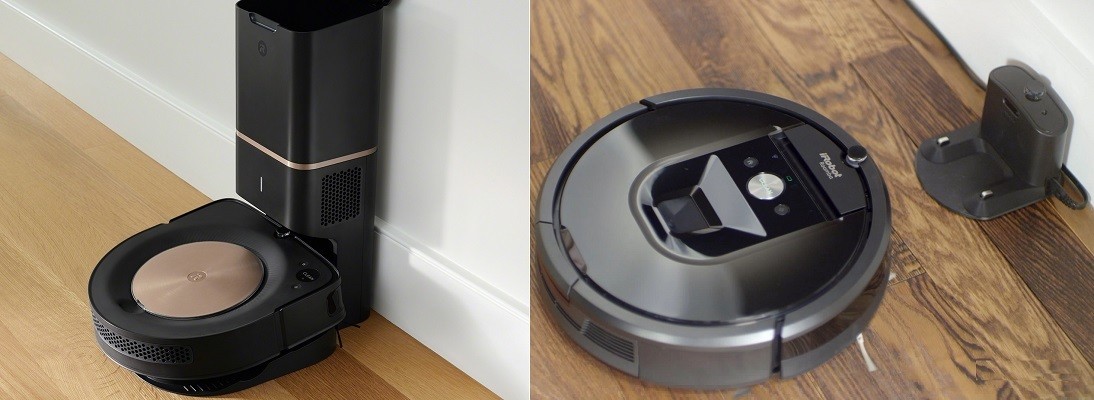
A. The Roomba s9+ and the Roomba i7+ are the only two models that use the Clean Base system. The Clean Base is much larger, standing about 14 inches tall. It includes its own motor and suction port to empty the collection bin of the two robots when they dock to recharge.
The rest of the Roomba line up uses the Home Base which only acts as a beacon to get the robot to dock and charge, or to maintain the WiFi signal for the robots that are capable of using wireless communications.
Q. Can you upgrade the Roomba 960 or Roomba s9+?
A. The Roomba 960 cannot be upgraded in any fashion. In that respect, neither can the s9+. However, the s9+ is the upgraded version. The original version, the Roomba s9, can be upgraded to the s9+ by adding the Clean Base and accompanying collection bin. The Clean Base system is the only change in the s9 and s9+ models.
Q. How are the side brushes and exhaust diffusion different? What does that mean?
A. The s9 models have a new side brush, it is slightly smaller, a lot softer and rotates much slower. One of the major reported issues with all previous models was that lighter debris was pushed around or away from the robots instead of being collected.
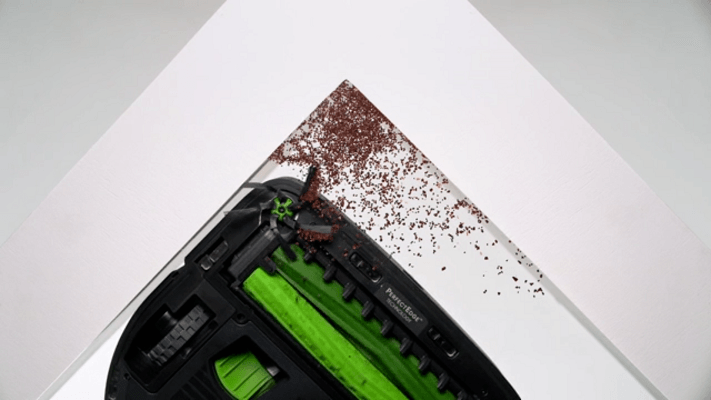
With the s9, the slower spinning brush doesn’t fling debris anymore. The other reason that lighter debris was being pushed around was that the exhaust air wasn’t diffused and was aimed at the ground. Now, with the s9, the exhaust air is diffused and more horizontally directed to avoid debris blow-back.
Q. What are my containment options?
A. For the Roomba 960, you will get one dual-mode virtual wall barrier with the purchase. You can purchase more if you need them to help contain the robot around your home. You get no virtual wall containment options with the purchase of the s9+. The s9+ is compatible with the dual-mode barriers, if you would like to purchase them.
However, the digital containment though Imprint Smart Mapping technology all but eliminates the need for the battery-operated virtual wall towers.
Q. Are the robots noisy?
A. The Roomba line has never been known for its silent running robots. The Roomba 960, for example, averages about 67dB rating. Which is more than a conversation or city traffic through a window. With the 960 in the room, you will have to raise your voice to talk or the volume on the television to hear.
The Roomba s9 is much quieter. Most test show the noise level to be around 52 to 55dB, which is quiet enough to run the vacuum at night without disturbing heavier sleepers.
What I Like About the Roomba 960
- iAdapt 2.0 technology for better navigation and mapping.
- More powerful motor than the 600 series.
- Long battery life and large collection bin for less maintenance.
- Cleans in human-like patterns to minimize missed areas of the floor.
What I Like About the Roomba s9+
- iAdapt 3.0 technology for even further advancements in cleaning and power.
- 4th generation motor produces enough suction power and airflow to compete with smaller upright vacuums.
- Huge battery for up to 2-hours runtime.
- Imprint technologies for a smarter, more efficient clean.
In Conclusion
The Roomba s9+ is the best of the best, of that there is no debate. The only downside to the robot is the initial sticker price. What may be out of reach for most, you do get what you pay for, and the Roomba s9+ is worth the investment.
Using the Roomba s9 will all but eliminate the need for your standard upright, and most users report even cleaner floors, or not having to vacuum for a few months at a time manually.
The Roomba 960 cannot make those claims. However, it is much more affordable and easily accessible to more homes. With the recharge and resume feature, along with the app and voice commands, the Roomba 960 is still a viable contender for many.
